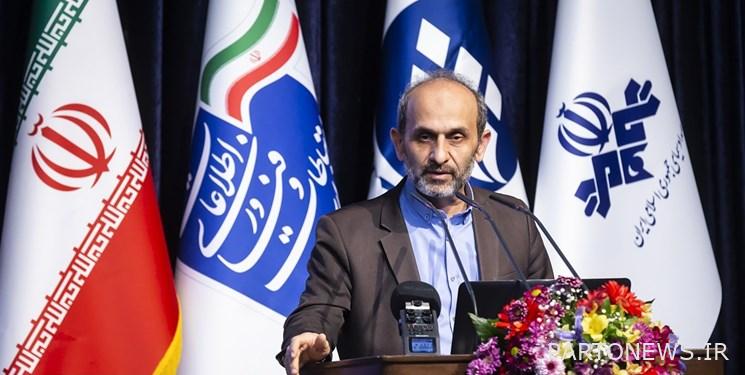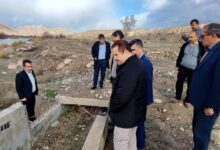National Media Transformation Approaches in the New / Mountain Era: Transformation in Approach, Content and Mechanism

According to Fars News Agency, the “Horizon of Transformation” meeting was held on Sunday, March 13, in the presence of the organization’s managers, as well as a group of martyrs’ families, veterans and national media veterans at the International Conference Center of the Radio and Television.
Peyman Jebli, the head of the Radio and Television of Iran, sat in front of Mohammad Hossein Saei, the president of Soura University and a full member of the Supreme Council of the Cultural Revolution, to answer his questions about the national media’s transformation approaches in his new term.
The real member of the Supreme Council of the Cultural Revolution asked about the features of the national media transformation document and said: What is the difference between this document and other development plan documents?
Jebli replied: This document is not a development document, it is a transformation document; Many of the documents at first glance are structural and infrastructural developments, but in the transformation document we tried not to get caught up in structural changes in the first place, and gave first priority to the transformation of what is broadcast on the national media antenna.
He pointed out that the Supreme Leader’s concern has been in the field of content in different periods of the organization, he said: if the measures developed in this program, in the time provided, the desired change in content is created, the structure will not change and With this structure, we will move forward and change only the structures that have not been able to help change the content.
The head of the Radio and Television Organization mentioned the three areas of change in the new era in all sectors, including TV, sound, overseas and news, and said: “The change in content, change in approach and change in the mechanism will be the three areas of change in the organization.”
Jebli further stated: The two axes of identity and justice are the drivers of progress. Identity is what we are known for and is the distinguishing feature of the Iranian people.
He added: “It seems that the reflection of many aspects of our identity has been neglected in the media over the years; While throughout the country, signs of national and Islamic identity are abundant.
The head of the national media, referring to the statement of the second step of the Islamic Revolution, which the Supreme Leader has referred to as the second fortieth of the revolution, said: .
He added: “The national media can play an important role in solving this problem and passing the society through this challenge.”
The head of the Radio and Television Organization also said in response to the role of the organization in demanding: “Justice is not a one-dimensional field and as much as the society’s right to appear and pay attention to justice in demanding is realized, expressing the system’s progress and achievements plays a role in promoting justice.” .
Referring to the concept of justice, Jebli said: “Justice means that everything should be in its place, and we should pay as much attention to the efforts, progress and achievements of the system as it should to the demands of the people, which is also the will of the people.”
The head of the Radio and Television Organization then said in response to Saee’s question about the meaning of the transformation document: “The meaning of transformation is renewal. To think that we have to reach a point and stay at that point is not a transformational view.” We must always evolve from one state to another.
Jebli then addressed various aspects of the transformation document. He considered the great mission of the national media as the slogan of identity and justice to achieve the Islamic civilization of Iran and added: We accepted the fact that we should reverse the course and instead of quantity overcoming attractiveness and attractiveness over content, priority should be given to content and then attractiveness and finally quantity. Due to various stages of social change in the country in the 1970s and beyond, due to foreign media pressures and attacks, we had to impose a heavy burden on ourselves to prevent cultural influence and dissenting media messages; So we increased the volume of programs, and this increase gradually led to the first priority being given to quantity, then attractiveness, and then content.
The preference for green line management over red line management was another evolutionary approach to the transformation document that Jebli spoke about, adding: “We have not paid attention to many areas.” For example, in the Bahman 22 march this year, we portrayed the march of dear people in the villages as the smallest social unit that had not been done before.
He added: “The meaning of preferring green line management to red line management is what we should not do at the same time and more than being careful; Take care of what we should and should not have done.
Serious entry into the field of cyberspace, strengthening the presence of deep revolutionary and religious thinking at the beginning of the production chain and avoiding the field of passive and secular views were other axes that Jebli spoke about.
He stated: The production chain starts from the creation of the idea to reach the final point, ie distribution. It’s a must have, for any Affiliate, promoting any program.
He added: “What we noticed in this change of approach was that the beginning of the chain should be a religious and revolutionary view and thinking, that is, from the formation of the plot and the creation of the story, this view should exist, not take a proposal and finally Let’s examine and modify the produced work with a revolutionary and religious view.
The head of the national media considered one of the missions of the new era to discover talents and stated: “Unfortunately, many talents of the organization have not been discovered and mechanisms must be created to use all the capabilities of the organization plus the capabilities of the people and the cultural front outside the organization.”
Referring to the Supreme Leader’s emphasis on the importance of the Cultural Front of the Revolution, Jebli said: “After 1988, the Supreme Leader’s interpretation of the use of manpower was a proposition of fire, which referred to its own capabilities in society and this interpretation is compounded.” It will definitely be realized.
Referring to the importance of polls and sociologies in the national media, the head of the national media said: “Brilliant work has been done in this area, but now more attention should be paid to the field of impact assessment, which has been neglected so far.”
In the end, he said: “For us, the influence of the audience is very important, and after this, the behavioral action of the audience should be monitored so that the organization’s polls from the form of” surveying the audience and the level of interest “to” measuring the impact and influence of content in Audience »reach.
End of message /

